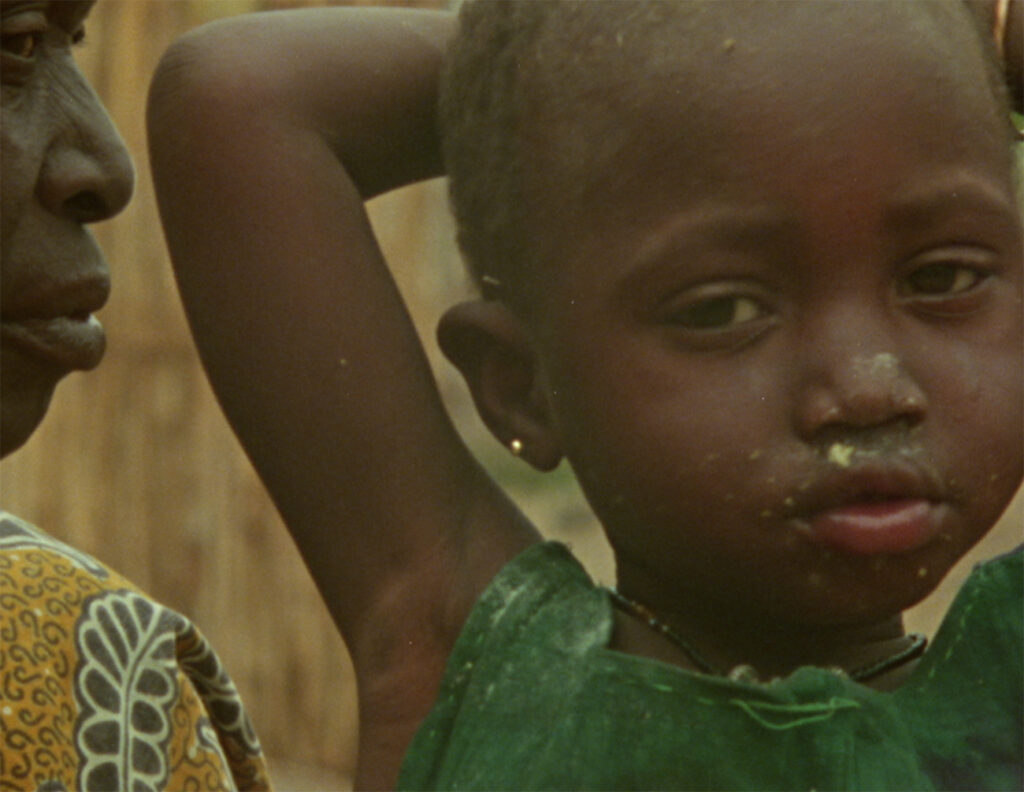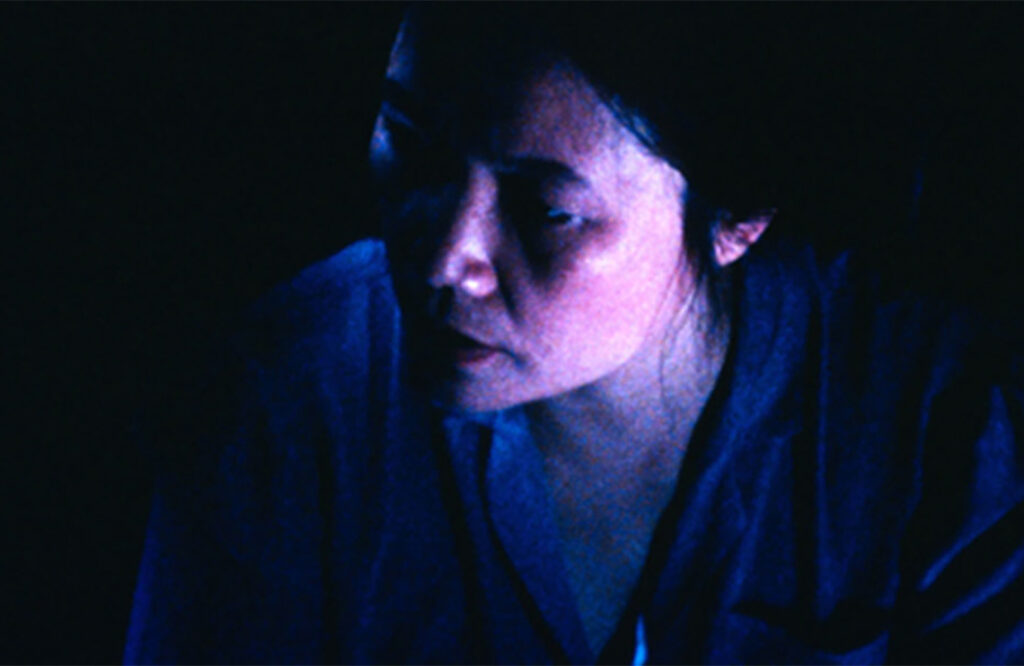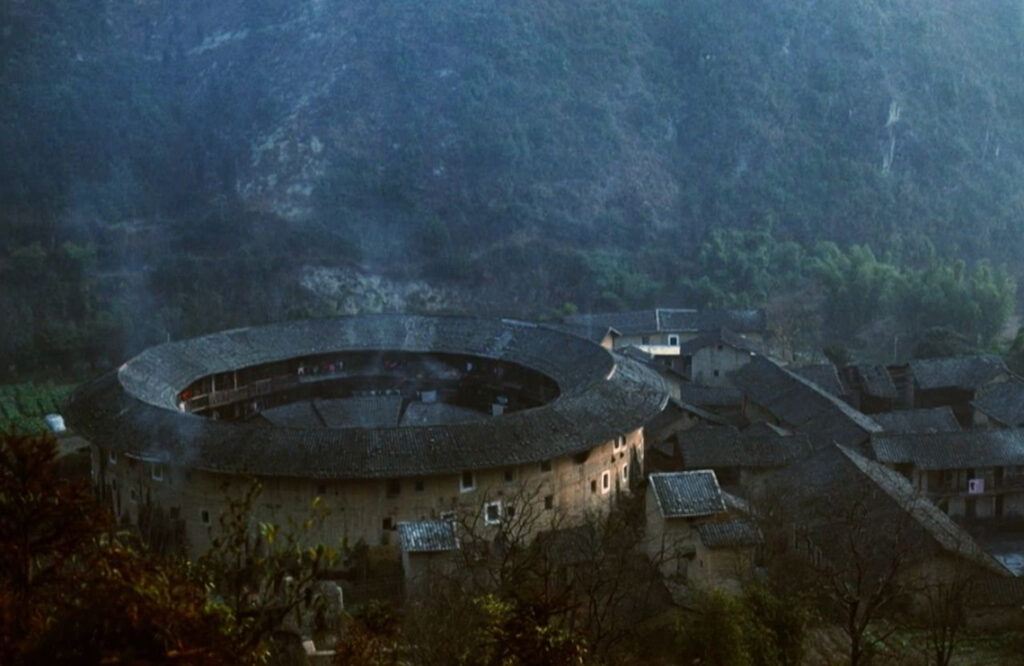In the context of the Courtisane festival 2023 (29 March – 2 April). Curated by Stoffel Debuysere.
“Patriarchy and hegemony. Not really two, not one either. My history, my story, is the history of the First World/Third World, dominant/oppressed, man/woman relationship.. When speaking about the Master, I am necessarily speaking about both Him and the West. Patriarchy and hegemony. From orthodox to progressive patriarchy, from direct colonization to indirect, subtly pervasive hegemony, things have been much refined, but the road is still long and the fight still goes on.”
“I do not intend to speak about; just speak nearby.” With these words, spoken in her debut film, Reassemblage (1982), Trinh T. Minh-ha describes the attitude she adopts throughout her oeuvre. An attitude characterized by an aversion to institutional authority and expertise, and instead grounded in embodied experience and self-reflection. A way of positioning herself in relation to the world that expresses itself in all aspects of her films: verbally, musically, visually. For example, in Reassemblage, the first of two films she made in West Africa, she exposes the transformations that inevitably take place when attempting to put the impossible experience of ‘what’ comprises Senegalese culture into cinematic form. That same urge to break down patterns of expectation and challenge the interpretive claims of authoritarian forms is also found in her writing. Her influential book Woman, Native, Other (1989, in French version: Femme, indigène, autre, Paris: B42, 2022 ), for instance, is primarily a questioning of the contradictory imperatives faced by the ‘I’, as a ‘Third World woman’, in creating and critiquing the role of creator and intellectual across literature, anthropology and the arts.
Born in Hanoi, Trinh T. Minh-ha emigrated to the US during the Vietnam War, where she studied music composition, ethnomusicology and French literature. Since the early 1980s, she has been problematising the forms of reductionism and essentialism that influence our self-image and worldview. By her own admission, her films are partly motivated by her experiences in former colonised Vietnam – experiences that she clearly recognised, shared and re-lived in Africa. These life experiences account for her decision to make films that point to the process of the construction of meaning, and to herself as an active element in that process. Her films are grounded in the question: why not approach a country, a people, a culture by starting with what comes with an image or with a name, like ‘Senegal’, but also ‘Vietnam’, ‘China’, or ‘Japan’? What exactly stands for, characterises and speaks to a cultural and political event? How does the medium of cinema allow one to show, tell and receive rather than merely represent? In other words, Trinh considers a given name or a recorded image not as finalities but as points of departure. In Shoot for the Contents (1991) and her latest film, What About China? (2022), she does not search for the ‘true’ face of China but probes beneath and with the surface of the country’s image – an image, determined by the media and other forms of information, that’s taken for granted in our daily relationship to the country.
The space in which Trinh T. Minh-ha works and creates is where she confronts and leaves behind the world of beaten paths and traffic regulations. She seeks the in-between spaces where established boundaries can be rearranged and shifted, including those of the ‘I’. In each of her films, rather than as a source, the ‘I’ is deployed as an open site where other manifestations of the ‘I’ can take up residence and incongruous elements can converge. In Surname Viet Given Name Nam (1989), she approaches Vietnamese culture in all its multiplicity without endorsing the legitimized subjectivity of the ‘insider’. Rather than constructing a single homogeneous perspective or an ‘unmediated’ personal account, she portrays culture through popular memory and oral traditions, primarily concerning Vietnamese women, while simultaneously addressing the politics of interviewing and the politics of translation. “Crisscrossing more than one occupied territory at a time,” she writes, “she remains perforce inappropriate/d – both inside and outside her own social positionings… A trajectory across variable praxes of difference, her (un)location is necessarily the shifting and contextual interval between arrested boundaries.”
In contrast to the endless discourse about a virtual boundlessness in a globalised world, Trinh T. Minh-ha unveils and punctures the separations and demarcations that define our place in and relationship to the world. “Reality is delicate,” she says in Reassemblage, and it is that constant, wavering probing of reality, filled with a passion called wonder, averse to claims of authenticity, authority or neutrality, that shows from her work the power to break out of our compartmentalised world.
——
In the context of this focus on the work of Trinh T. Minh-ha, we invited musician, author and curator David Toop to reflect on the sound work in her films. The resulting publication, titled Breath, rhythm, silence, resonance: listening beyond seeing in the films of Trinh T. Minhha, is the first publication in the Echoes of Dissent series, devoted to the politics of the soundtrack. This series is part of the research project of the same name within KASK & Conservatorium School of Arts Ghent.
Thanks to An van. Dienderen, Christophe Piette (CINEMATEK), Angelika Ramlow (Arsenal – Institut für Film und Videokunst), Colleen O’Shea (Women Make Movies)
This program will be followed by a complete retrospective dedicated to the films of Trinh T. Minhha at CINEMATEK in Brussels (www.cinematek.be).
——
Reassemblage: From the Firelight to the Screen
Trinh T. Minh-ha, US, 1982, 16mm, 40′
Reassemblage is Trinh T. Minh-ha’s first 16mm film, made after a three-year stay (1977-80) in Senegal, where she taught music at the Institut National des Arts in Dakar. It was during this stay that she had become aware of the hegemony of anthropological discourse in any attempt, by both local outsiders and insiders, to identify and capture the observed culture. This film is a response to the urgency she felt to question the anthropological apparatus, its essentialising constructs and colonial ethos. This also implied a questioning of her own position as a “hybrid insider”, as someone who shares a certain experience of colonialism but at the same time is no less considered an outsider than any European. Above all, the film is a response to a desire to “not simply mean”; a desire not to approach Senegalese culture by wrapping it in reductive constructions of meaning. Trinh subverts the conventions of cinematic representation by playing with repetition, non-synchronous sound and unstable camerawork that disrupt temporal and spatial continuity and invite viewers/listeners to assume their own relationship to the world that appears on screen.
“My approach is one which avoids any sureness of signification. In most anthropological presentations, the establishing of connections between signs and the deciphering of cultural codes is flattened out by the voice of knowledge, the voice of factual truth. This is reflected, in films, in the omniscience of the cinematography and the editing as well as the commentary and/ or the “talkinghead” strategy. The strategies of Reassemblage question the anthropological knowledge of the “other,” the way anthropologists look at and present foreign cultures through media, here film… The critical work in Reassemblage […] is not simply aimed at the anthropologist, but also at the missionary, the Peace Corps volunteer, the tourist, and last but not least at myself as onlooker.”
Surname Viet Given Name Nam
Trinh T. Minh-ha, US, 1989, 16mm, 108′
“A Vietnamese woman making a film on Vietnamese women: What could sound more familiar and correct in today’s context of cultural diversity and liberal pluralism?” And yet, says Trinh T. Minh-ha, self-representation and representation is a responsibility one cannot afford to merely reject. In order to break away from that kind of authorized subjectivity, she chose for a number of itineraries that would allow her to show “the culture” without endorsing the insider’s authority. This was largely done by avoiding the so-called factual historical information that one easily gets in history books on Vietnam, and by working with the more slippery realms of oral tradition and popular memory: the songs, sayings, proverbs that expose women’s condition; the stories that people remember of the historical heroines of Vietnam; and the life stories of contemporary Vietnamese women. In parallel, Trinh T. Minh-ha also emphasises the politics of the interview by drawing on a series of interviews that had been conducted in Vietnam by another woman of the Vietnamese diaspora (Mai Thu Van), translated and published in French, re-translated into English by herself, and then re-enacted in the film. In this way, both the role of translation in film and the role of film as a form of translation are problematised.
“It’s not a return in a physical sense, but a return in the sense that I made my two previous films in Africa before making Surname Viet – a film in which I have finally been able to come to terms with Vietnam or with a national identity; a film focusing on Vietnamese women or on female identity and difference. That’s why it was extremely important for me not to approach it from a legitimized “insider’s” point of view, but rather from a number of spaces locating me somewhere between an insider and an outsider. Spaces manifested, for example, in the acknowledgment of the mediator’s role; in the multiplicity of translation, of the “you” referred to by the interviewees, and of firstperson narratives; and in the exposing of the politics of interviews involved.”
Shoot for the Contents
Trinh T. Minh-ha, US, 1991, 16mm, 102′
This film by Trinh T. Minh-ha, whose title partly refers to a Chinese guessing game, reflects on Mao’s famous statement: “Let a hundred flowers blossom and a hundred schools of thought contend.” It offers simultaneously an excursion into the maze of allegorical designations and narratives in China and a reflection on questions of power and change, politics and culture, as reflected by the events in Tiananmen Square in 1989. Contrary to conventional expectations of “authenticity”, Trinh T. Minh-ha offers to the viewer a wide range of what one can call “border people”, who are right at the edge of being an outsider and an insider to the culture. Testimonies of artists, philosophers and cultural workers are interwoven with female voices, Chinese popular songs and classical music, and sayings of Mao and Confucius. Video images emulate the gestures of calligraphy and contrast with film footage of rural China and stylized interviews. Like traditional Chinese opera, Trinh’s film unfolds through “bold omissions and minute depictions” to render “the real in the illusory and the illusory in the real.” Exploring color, rhythm and the changing relationship between ear and eye, this meditative documentary realizes on screen the shifts of interpretation in contemporary Chinese culture and politics.
“Every work I realized, has been realized to transform my own consciousness. If I went to Africa to dive into a culture that was mostly unknown to me then, I went to China mainly because I was curious as to how I could depart from what I knew of Her. The prejudices that the Vietnamese carry vis-a-vis the Chinese are certainly historical and political. The past domination of Vietnam by China and the antagonistic relationship nurtured between the two nations have been weighing so heavily on the Vietnamese psyche that very often Vietnamese identity would be defined in counteraction to everything thought to be Chinese. And yet it suffices to look a bit harder at the Vietnamese culture – at its music, to mention a most explicit example – to realize how much it has inherited from both China and India.”
What About China?
Trinh T. Minh-ha, US, CN, 2022, DCP, 135′
In her newest film, the sonically striking What About China?, Hi8 footage shot in rural China from 1993-1994 is reframed thirty years later: first against China’s contradicting representation, histories, and futures, and second through the process of conversion from video to digital, where the transformation of low-res images creates ghostly animations on a canvas of multi-generational change. Pulsing against the surface of this inquiry is a theory of harmonics that takes the Hakka Roundhouse – a circular multi-family dwelling connected by common areas in the center – as its nexus. Trinh finds in this architecture, in the materials she uses to compose her film, and in the footage converted from video to digital a network of passageways: between society and nature, self and other, landscape and innerscape. The viewer is invited to steep themselves in these harmonics, both material and metaphor, to find associative flights from the polyrhythmic interaction of ideas, instruments, songs, text, moving and still images. We journey through these haunted, infinite scales, guided by voiceover readings by Xiaolu Guo, Xiao Yue Shang, Yi Zhong, and Trinh herself. Each offers a different entryway into the film’s polyvocal network of thought. One asks: “What exactly is disappearing? And why?” (Kim-Anh Schreiber)
“The notion of “speaking nearby” put forth in Reassemblage has been realized differently with each film of mine. It’s a challenge for me every time I put it into practice. How do you speak nearby? It is in What About China? where this practice of speaking in proximity, rather than merely speaking for and about, is most comprehensive. Being closely related to China – China is an ancestral culture of Vietnam, where I was born – does not qualify me to speak about Her. Of greater fascination is how the film is positioned in relation to China, or how the Self is extended through a relationship with the Other.”
A conversation with Trinh T. Minh-ha
How can we think and speak about the notion of “speaking nearby,” which is a fundamental guiding principle throughout Trinh T. Minh-ha’s work? How does it relate to gestures of respect, wonder, love? How does it translate into the art form called cinema, verbally, musically, visually? These questions are the starting point for an extended conversation with Trinh T. Minh-ha.
“To keep the relation of language to vision open, one would have to take the difference between them as the very line of departure for speech and writing, rather than as an unfortunate obstacle to be overcome. The interval, creatively maintained, allows words to set in motion dormant energies and to offer, with the impasse, a passage from one space (visual, musical, verbal, mental, physical) to another. To prevent the passage from closing itself off and to preserve the infinity of the task of speaking nearby, a number of conversations developed around specific books and films and are further assembled in an interrelational space of detour. Just as the form a film takes in the creating process can acutely materialize what it says in content, the way a film is talked about can, when circumstances allow in the encounter between interviewer(s) and interviewee, be keenly tuned to the way it is made.”
In the context of the research project Echoes of Dissent (KASK & Conservatory School of Arts)





